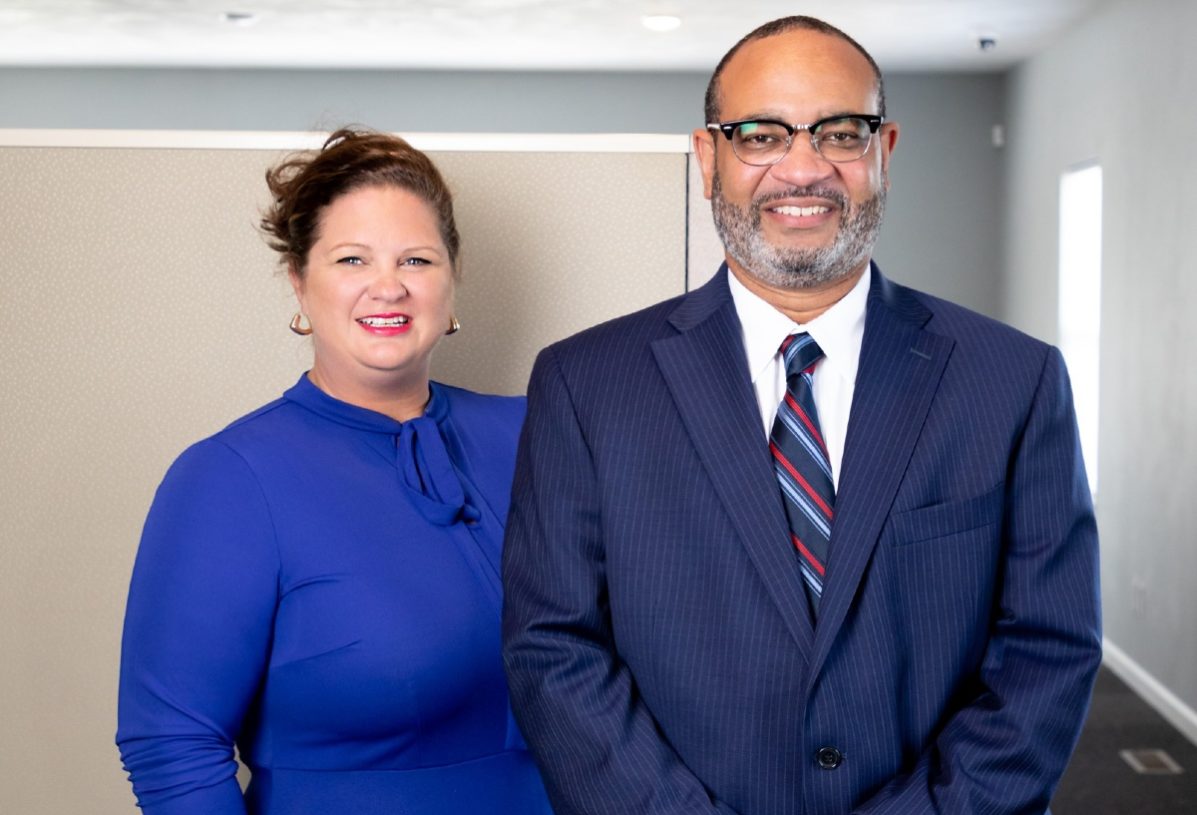A quintessential Olin project: How data supports this bank’s values-based strategy
- September 16, 2020
- By Kurt Greenbaum
- 3 minute read

Eight years ago, St. Louis’ Midwest BankCentre opened a branch in Pagedale, a suburb with a median household income of $27,000—about 40% of the entire region’s median.
Five years later, the bank opened a branch inside a North St. Louis Baptist church, in a neighborhood with a median household income of about $31,400.
Serving underbanked communities serves as part of the bank’s mission as a values-based organization, but Danielle Bateman Girondo, BSBA ’00, executive vice president of marketing, and Alex Fennoy, executive vice president of Community and Economic Development, wanted to go further. They wanted to make the case that it was also good business.
They found their answer from a semester-long practicum project through Olin’s Center for Experiential Learning. With faculty support from Sam Chun, professor of management practice, the students—Chris Colon, AB ’20; Frankie Hong, MSFQ ’20; Hannah Levin, MBA/MSW ’21; Lin Xie, MSBA’20; and Bruno Moreira Yamamura, MBA ’20—delivered their findings in May.
Midwest BankCentre’s two branches in underserved areas had created $11.3 million in additional regional revenue and more than $9.7 million in consumer wealth—as well as 124 new jobs in the region.
“It was great to be able to make the business case for why we need to make more investments in providing access to capital to all communities,” Girondo said. “We’re doing good and here’s the proof. It’s not just us saying it.”
Quantifying the ripple effect
Bringing full-service banking to traditionally underbanked communities doesn’t only serve Midwest’s community development goals. Girondo noted that it also helps differentiate the bank in a crowded marketplace. In its 2018 report to the community, Midwest noted, “With more than 130 banks and credit unions, St. Louis is one of the most overbanked cities in the country—but those services are not distributed evenly.”

Providing access to checking or savings accounts or other banking services creates a ripple effect, opening opportunities to provide financial education and offer loans that spur homeownership, business development and employment.
“It really struck me to learn how important the access to financial resources can be for households,” Hong said of the project, which was quintessentially aligned with Olin’s strategy of promoting values-based, data-driven decision-making.
“Midwest BankCentre really emphasized to us the ways in which they prioritized building trust in the community and the importance in doing so,” Levin added.
After an initial in-person meeting with bank leadership before the pandemic moved everything online, the students tackled the project by exploring ways to quantify the effect of adding banking services to an underbanked community.
“All we knew was that Midwest BankCentre was, somehow, having a positive impact in the community,” Yamamura said. “One of the biggest challenges that we faced was how to translate that into numbers.”
Data supporting values
Chun guided the students to a few existing economic measurement models, and he urged them to remember that precise numbers were not the goal of the exercise. It was about understanding on a macro level the impact of the service in the community. Chun credited the team with identifying additional modeling research on their own that they could tap and adapt as they analyzed Midwest BankCentre’s product matrix and account data.
Bruno said the team was able to construct models to interpret the strategy the bank has always implemented by investing money from the communities back to the communities.
Yamamura said one of the models calculated how Midwest’s loans were stimulating the local economy by generating more jobs and income for the population through a “multiplier effect.”
“The models are far from being perfect,” he said. “But I think they are powerful in supporting the bank’s message and its core values.”
Midwest BankCentre, the second-largest privately owned bank in the region, is a 114-year-old St. Louis institution with more than $2 billion in assets.
“The team was really inventive,” Chun said. “They put their hands in there and they created models of mortgage impact, financial training impact. I was really impressed.”
So was Girondo. “I was beyond impressed with the students,” Girondo said. “They did a really good job.”
Pictured above: Danielle Bateman Girondo, BSBA ’00, and Alex Fennoy of Midwest BankCentre.
Media inquiries
For assistance with media inquiries and to find faculty experts, please contact Washington University Marketing & Communications.
Monday–Friday, 8:30 to 5 p.m.
Sara Savat
Senior News Director, Business and Social Sciences
